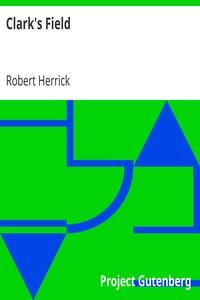Read this ebook for free! No credit card needed, absolutely nothing to pay.
Words: 5007 in 2 pages
This is an ebook sharing website. You can read the uploaded ebooks for free here. No credit cards needed, nothing to pay. If you want to own a digital copy of the ebook, or want to read offline with your favorite ebook-reader, then you can choose to buy and download the ebook.
introduction of various small apartments, and present, in consequence, marvellous anomalies in proportion. This building is known in Venice as the Casa Farsetti.
The one next to it, though not conspicuous, and often passed with neglect, will, I believe, be felt at last, by all who examine it carefully, to be the most beautiful palace in the whole extent of the Grand Canal. It has been restored often, once in the Gothic, once in the Renaissance times,--some writers say, even rebuilt; but, if so, rebuilt in its old form. The Gothic additions harmonize exquisitely with its Byzantine work, and it is easy, as we examine its lovely central arcade, to forget the Renaissance additions which encumber it above. It is known as the Casa Loredan.
The eighth palace is the Fondaco de' Turchi, described in the text. A ninth existed, more interesting apparently than any of these, near the Church of San Mois?, but it was thrown down in the course of "improvements" a few years ago. A woodcut of it is given in M. Lazari's Guide.
Of all the various principles of art which, in modern days, we have defied or forgotten, none are more indisputable, and few of more practical importance than this, which I shall have occasion again and again to allege in support of many future deductions:
"All art, working with given materials, must propose to itself the objects which, with those materials, are most perfectly attainable; and becomes illegitimate and debased if it propose to itself any other objects, better attainable with other materials."
Thus, great slenderness, lightness, or intricacy of structure,--as in ramifications of trees, detached folds of drapery, or wreaths of hair,--is easily and perfectly expressible in metal-work or in painting, but only with great difficulty and imperfectly expressible in sculpture. All sculpture, therefore, which professes as its chief end the expression of such characters, is debased; and if the suggestion of them be accidentally required of it, that suggestion is only to be given to an extent compatible with perfect ease of execution in the given material,--not to the utmost possible extent. For instance: some of the most delightful drawings of our own water-color painter, Hunt, have been of birds' nests; of which, in painting, it is perfectly possible to represent the intricate fibrous or mossy structure; therefore, the effort is a legitimate one, and the art is well employed. But to carve a bird's nest out of marble would be physically impossible, and to reach any approximate expression of its structure would require prolonged and intolerable labor. Therefore, all sculpture which set itself to carving birds' nests as an end, or which, if a bird's nest were required of it, carved it to the utmost possible point of realization, would be debased. Nothing but the general form, and as much of the fibrous structure as could be with perfect ease represented, ought to be attempted at all.
These are two, namely, its DUCTILITY when heated, and TRANSPARENCY when cold, both nearly perfect. In its employment for vessels, we ought always to exhibit its ductility, and in its employment for windows, its transparency. All work in glass is bad which does not, with loud voice, proclaim one or other of these great qualities.
In the second place, this modern barbarism destroys the true appreciation of the qualities of glass. It denies, and endeavors as far as possible to conceal, the transparency, which is not only its great virtue in a merely utilitarian point of view, but its great spiritual character; the character by which in church architecture it becomes most touchingly impressive, as typical of the entrances of the Holy Spirit into the heart of man; a typical expression rendered specific and intense by the purity and brilliancy of its sevenfold hues; and therefore in endeavoring to turn the window into a picture, we at once lose the sanctity and power of the noble material, and employ it to an end which is utterly impossible it should ever worthily attain. The true perfection of a painted window is to be serene, intense, brilliant, like flaming jewellery; full of easily legible and quaint subjects, and exquisitely subtle, yet simple, in its harmonies. In a word, this perfection has been consummated in the designs, never to be surpassed, if ever again to be approached by human art, of the French windows of the twelfth and thirteenth centuries.
FOOTNOTES
I do not like to hear Protestants speaking with gross and uncharitable contempt even of the worship of relics. Elisha once trusted his own staff too far; nor can I see any reasonable ground for the scorn, or the unkind rebuke, of those who have been taught from their youth upwards that to hope even in the hem of the garment may sometimes be better than to spend the living on physicians.
Casa Tiepolo in Lazari's Guide.
I do not think that there is anything more necessary to the progress of European art in the present day than the complete understanding of this sanctity of Color. I had much pleasure in finding it, the other day, fully understood and thus sweetly expressed in a little volume of poems by a Miss Maynard:
Free books android app tbrJar TBR JAR Read Free books online gutenberg
More posts by @FreeBooks


: Bedenkingen tegen de Leer van Darwin Gevolgd door beschouwingen over eenige philosophische onderwerpen. by Reuther Antoine Charles - Darwin Charles 1809-1882









